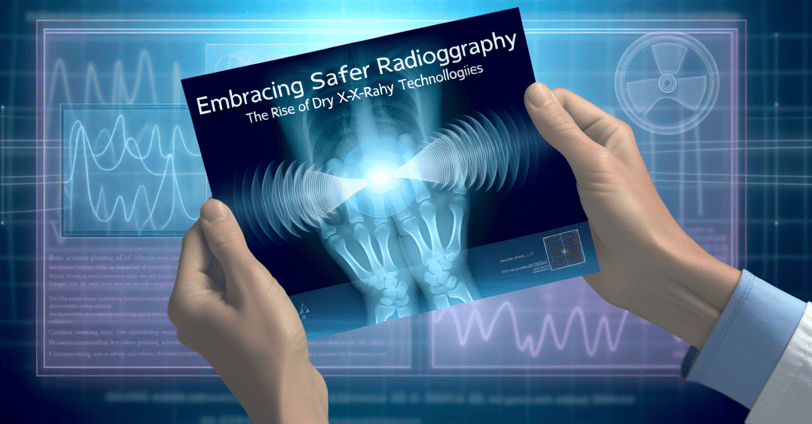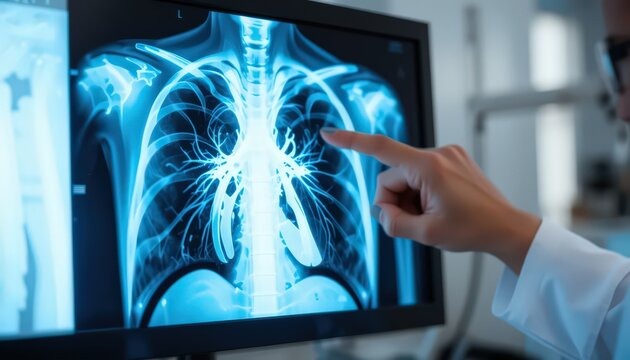How New X-ray Tech Helps You Provide Safer and More Accurate Patient Care
In the ever-evolving world of healthcare, one thing remains constant: the importance of accurate diagnostics. X-ray technology has long been a cornerstone in medical imaging, providing critical insights into patient conditions. However, as medical practices advance, so too do the tools we rely on for these insights. New X-ray technologies are transforming the landscape, ensuring that healthcare providers can offer safer, more efficient, and highly accurate diagnoses. At XrayBazar, we’re committed to providing the latest in cutting-edge X-ray technology that is not only enhancing patient care but also improving workflow and efficiency in healthcare practices. Let’s take a look at how these advancements in X-ray technology are helping medical professionals provide safer, more accurate care for their patients.
3/20/20253 min read


1. Reduced Radiation Exposure
One of the most significant advancements in modern X-ray technology is reduced radiation exposure. Traditional X-ray machines required higher doses of radiation, which could lead to potential health risks over time, especially with repeated imaging.
New technologies, such as digital radiography (DR) and computed radiography (CR), have dramatically decreased the amount of radiation used while maintaining or even enhancing the quality of images. DR systems use sensors to capture images directly, while CR systems use imaging plates to convert X-rays into digital signals. These systems allow for sharper, clearer images at much lower radiation levels, significantly improving patient safety.
Additionally, innovations such as fluoroscopy machines now come with built-in radiation dose reduction features, ensuring that real-time imaging doesn’t come at the cost of increased radiation exposure.
2. High-Resolution Imaging for More Accurate Diagnoses
Another game-changer in the world of X-ray technology is high-resolution imaging. New X-ray systems provide sharper, clearer images with finer details, making it easier for healthcare professionals to spot issues that might have gone unnoticed with older technology. Whether it’s detecting fractures, tumors, or infections, the ability to see more detail means faster, more accurate diagnoses.
For example, digital radiography (DR) produces high-definition digital images that can be zoomed in and manipulated without losing image quality. This level of clarity allows for more precise analysis, reducing the risk of misdiagnosis and ensuring that healthcare providers can create the best treatment plan for each patient.
3. Faster Imaging and Diagnosis
In today’s fast-paced healthcare environment, time is of the essence. New X-ray technologies, such as portable X-ray machines and digital systems, are designed to deliver faster imaging results without compromising quality.
Portable X-ray machines offer the flexibility to quickly assess patients in emergency rooms, intensive care units, or even in remote locations. These devices, which are smaller and more efficient than traditional machines, provide rapid results that are essential for making quick decisions in critical situations. This is particularly beneficial for trauma patients or those who are critically ill, where immediate diagnosis and treatment are crucial.
With faster image processing offered by digital radiography, there’s no need to wait for film development, and patients get their results in real time. This streamlined workflow improves overall patient care, as it allows medical staff to act quickly and with confidence.
4. Real-Time Imaging for Dynamic Conditions
Fluoroscopy machines, which provide real-time moving images of the inside of a patient's body, have undergone significant advancements in recent years. These systems are now capable of producing high-definition dynamic images while minimizing radiation exposure. Real-time imaging is invaluable for procedures like catheter placement, swallowing assessments, and joint injections, where continuous monitoring is needed.
The ability to view a live image of a procedure as it happens allows healthcare providers to adjust and correct in real-time, reducing complications and improving the success rates of such interventions. This kind of precision is critical for minimizing risks during complex procedures.
5. Enhanced Workflow Integration and Better Collaboration
Modern X-ray technology is not just about improving the images themselves—it's also about how images are handled. With the rise of Picture Archiving and Communication Systems (PACS) and electronic health record (EHR) integration, digital X-ray systems make it easier than ever for healthcare providers to share and access patient images.
These systems enable instant image sharing between departments, specialists, and clinics, reducing delays in diagnosis and speeding up treatment decisions. This level of collaboration leads to more coordinated care, helping multiple healthcare professionals stay on the same page, which is critical for delivering comprehensive patient care.
6. Increased Patient Comfort and Experience
In addition to improving the safety and accuracy of diagnoses, new X-ray technology also enhances the patient experience. Older X-ray machines required patients to remain in uncomfortable positions for extended periods, leading to discomfort and anxiety.
With more ergonomically designed machines and advanced imaging systems, newer X-ray technology makes the process more comfortable for patients. For example, mobile X-ray units allow patients to be imaged in their beds or in emergency settings, which eliminates the need for them to move to a different room, reducing both physical strain and anxiety.
Additionally, advancements in image quality mean that patients spend less time in the machine. Clearer images reduce the need for repeat scans, ultimately leading to a quicker process and a better overall experience for patients.


Reference Website Links:
Radiological Society of North America (RSNA) - Advances in Imaging
https://www.rsna.org/American College of Radiology (ACR) - Medical Imaging Advancements
https://www.acr.org/National Institute of Biomedical Imaging and Bioengineering (NIBIB)
https://www.nibib.nih.gov/science-education/science-topics/radiologyThe American Society of Radiologic Technologists (ASRT)
https://www.asrt.org/Carestream Health - Radiology Solutions
https://www.carestream.com/
Innovative
Contact Us
Service
xraybazar.com
© 2024. All rights reserved.
Address- Rajasthan, India
Gmail Id- xraybazaroffcial.com
Important Links
